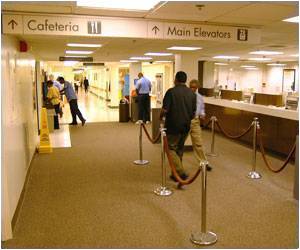Federally funded community health centres which have greater patient-centered medical home ratings on measures such as quality betterment had greater operating costs, states study in JAMA.

Robert S. Nocon, M.H.S., of the University of Chicago, and colleagues examined the association between PCMH rating and operating cost in primary care practices, specifically among federally funded health centers. The analysis consisted of a cross-sectional study of PCMH rating and operating cost in 2009. PCMH rating was assessed through surveys of health center administrators of all 1,009 Health Resources and Services Administration-funded community health centers. The survey provided scores from 0 (worst) to 100 (best) for total PCMH score and 6 subscales: access/communication, care management, external coordination, patient tracking, test/referral tracking, and quality improvement. Costs were obtained from the Uniform Data System reports submitted to the Health Resources and Services Administration. The primary measured outcomes were operating cost per physician full-time equivalent, operating cost per patient per month, and medical cost per visit. Six hundred sixty-nine health centers (66 percent) were included in the study sample, with 340 excluded because of nonresponse or incomplete data. The final sample of health centers represents 5,966 full-time equivalent physicians, who cared for more than 12.5 million patients nationally in 2009.
The average total PCMH score for the study sample was 60, with a low score of 21 and a high of 90. "In multivariate models that used total PCMH score as the medical home measure, higher total PCMH score was associated with higher operating cost per patient per month. For the average health center in our study sample, a 10-point higher total PCMH score (i.e., a score of 70 instead of 60 on the 100-point scale) was associated with a $2.26 (4.6 percent) higher operating cost per patient per month, assuming all other variables remain constant," the authors write.
The researchers also found that in multivariate analyses that used PCMH subscale scores, a 10-point higher score was associated with higher operating cost per physician full-time equivalent for patient tracking ($27,300) and quality improvement ($32,731) and higher operating cost per patient per month for patient tracking ($1.06) and quality improvement ($1.86). "A 10-point higher PCMH sub-scale score was associated with lower operating cost per physician full-time equivalent for access/communication ($39,809)."
The authors write that the magnitude of health center cost effect in this study is significant. "The $2.26 (4.6 percent) higher operating cost per patient per month associated with a 10-point higher total PCMH score would translate into an annual cost of $508,207 for the average health center ($2.26 per patient per month for 18,753 patients during 12 months). The cost associated with higher PCMH function is large for a health center, but that cost is relatively small compared with the potential cost savings from averted hospitalization and emergency department use observed in some preliminary PCMH studies."
"We believe payment for the medical home should be evidence based and grounded in observations of costs that accrue to each stakeholder in the health care system. Without such data, aggressive pressure to reduce health care cost is more likely to erode PCMH payment over time. Strong quantitative documentation of the actual practice cost of higher PCMH rating could provide the basis for evidence-based financial incentive structures that would be useful as the health care system moves toward more integrated care models such as the accountable care organization. It will only be through effective design and implementation of such financial mechanisms that the PCMH can be sustained."
Advertisement
Editorial: Financial Implications of the Patient-Centered Medical Home
Advertisement
"The report by Nocon et al provides an in-depth analysis of health center finances. In a few years, more information will become available about whether PCMHs improve care and reduce costs, key elements of their architecture, ways to redesign them to meet the needs of diverse populations, and how to efficiently integrate them into larger health systems. Patient-centered medical homes have great potential for remodeling the lagging U.S. primary care system, which will, if strengthened, be able to provide comprehensive health care services to all patients."
Editor's Note: Please see the article for additional information, including financial disclosures, funding and support, etc.
Source-Eurekalert










